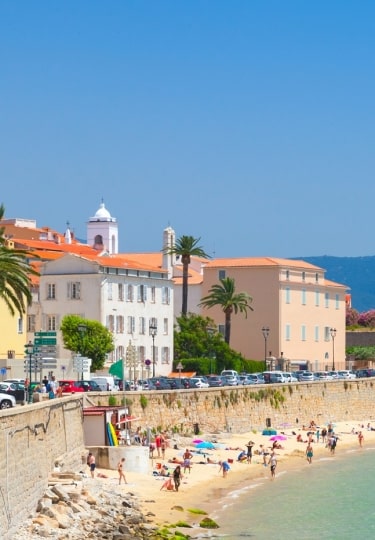Capital of the French island of Corsica, Ajaccio sprawls around a wide sweep of the Golfe d’Ajaccio. The elegant old center spreads inland from the waterfront, distinguished by a long, palm-lined promenade and patrician houses in shades of terracotta with bottle green shutters.
Jagged mountains frame the view to the south. Ferries buzz constantly to and from the mainland, and dozens of gleaming yachts dock along the quay. Corsica’s wild beauty is never far from the city, with glorious beaches, rugged headlands, and uninhabited islands for day trips within easy reach.
Why Visit Ajaccio
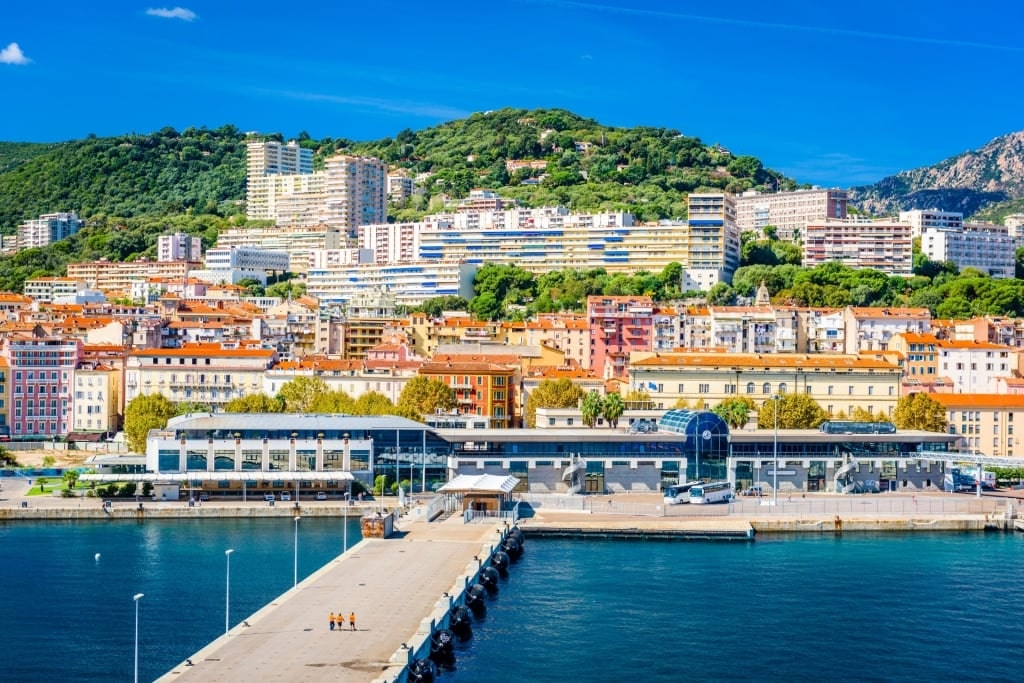
Ajaccio
Ajaccio exudes that summer style that you’ll only find in France, from chic cafés where holidaymakers sip Aperol Spritz in the sunshine to tantalizing market stalls piled high with colorful local produce.
The city itself is packed with history, much of it centered around the legacy of Napoleon, while an imposing 16th-century citadel guards the headland to the north.
The old center is made up of wide boulevards, splashing fountains, tasteful shops, and tempting brasseries with sidewalk seating. Getting around is easy, and the way of life is decidedly laid back.
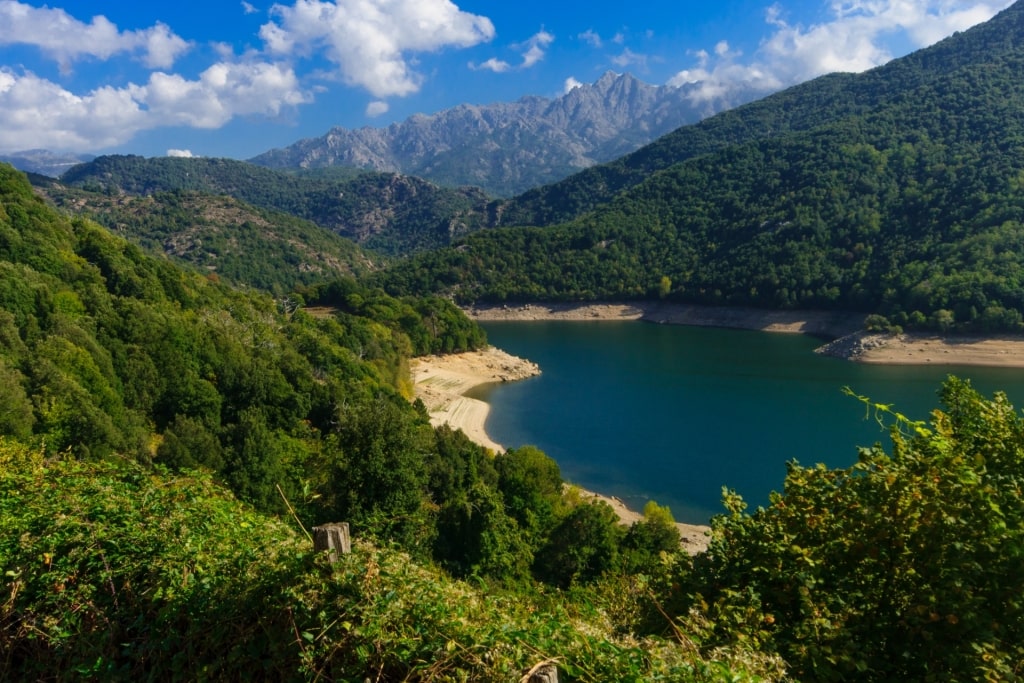
Prunelli Gorges
Embracing the natural world is easy. You can walk to the nearest beach for a swim, follow the Chemin des Crêtes hiking trail into the hills, or head further afield on a kayaking or snorkeling trip.
For a taste of the island’s raw beauty, visit the protected Iles Sanguinaires to the north of the city by boat, or head inland for the pink granite cliffs of the Prunelli Gorges, one of the most unique places to visit in Europe.
History & Culture
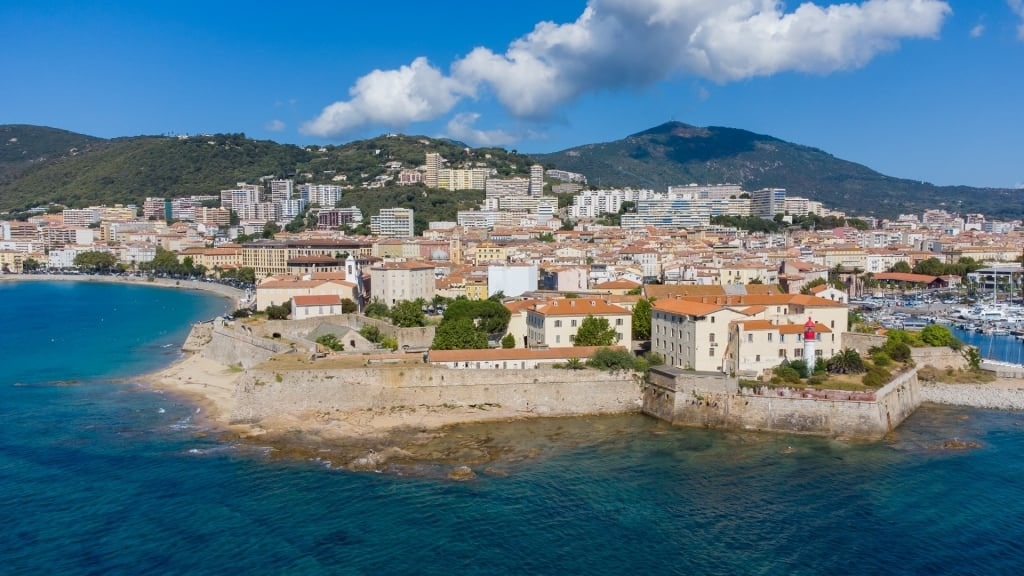
Citadel of Ajaccio
Although there has been a trading post here since the second century AD, Ajaccio was founded in 1492 by the Genoese, a powerful maritime republic based on the northwest coast of Italy.
The Genoese themselves built a fortified citadel, which still dominates the inner entrance to the bay. They isolated themselves from native islanders, contributing to a state of unrest.
In 1553, the island-born patriot Sampiero Corso, backed by French forces, seized the city and enlarged the Citadel. Ajaccio remained in French hands for six years until being handed back to the Genoese.
Ajaccio remained under Genoese control until 1764, when, exhausted by the constant uprisings of Corsican rebels, the Genoese sold the island to the French. Corsica became part of France with Ajaccio as its capital.
Napoleon Bonaparte was born here in 1769, going on to become emperor of France in 1804. He lived out his days in two exiles: one on the Italian island of Elba, and later the remote South Atlantic island of St. Helena, where he died.
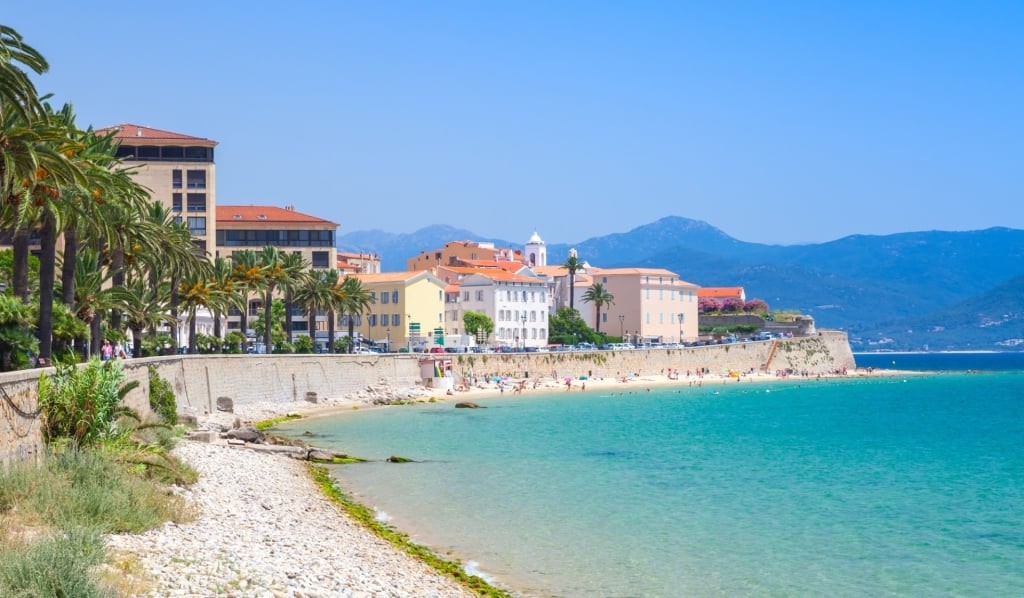
Ajaccio
Later in the 19th century, Ajaccio became a fashionable and elegant holiday resort for Europeans, particularly the British, who saw the city as a chic alternative to France’s Côte d’Azur. Many of the grand, shuttered buildings you see today in the old town originate from this time.
The island served as the headquarters of the local resistance in World War II, and in 1943 was the first French city to be liberated from the Nazis.
Corsicans have a strong sense of identity and see themselves as Corsican before being French. They have their own language, with French, Tuscan, and Genoese influences. Despite falling into decline in the 1970s, this is now taught in schools alongside French.
This Mediterranean island has a strong musical heritage, as well as its own regional cuisine and a thriving wine industry.
Wildlife & Nature
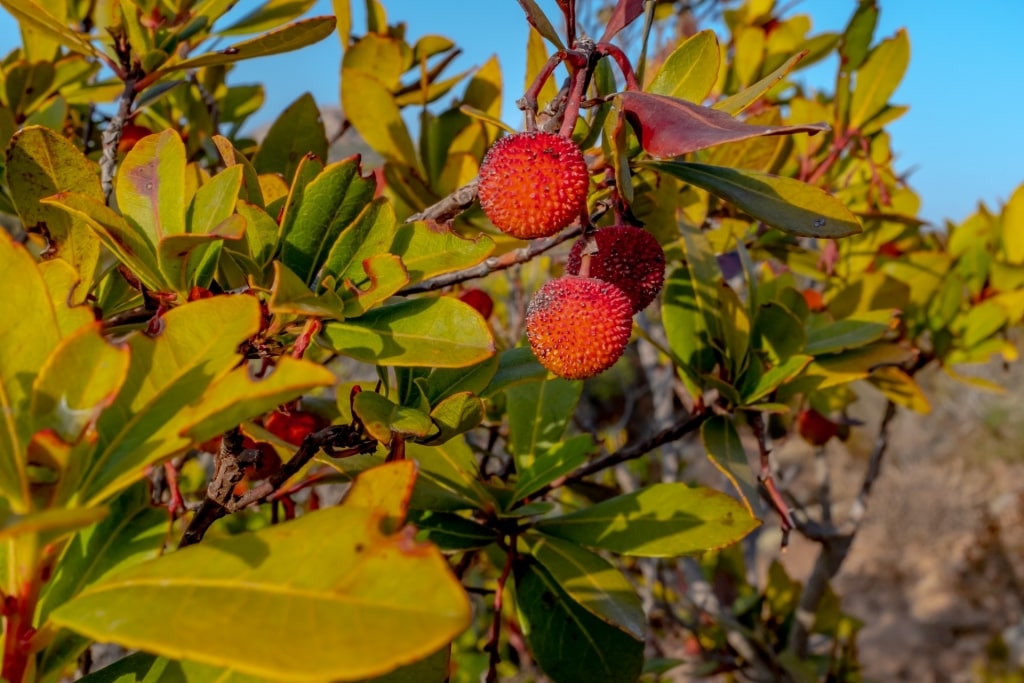
Strawberry tree
One of the best islands to visit in Europe, Corsica is magnificently wild and rugged, with deep gorges and jagged coastlines.
You’ll hear Corsicans talking with misty eyes about the maquis, the collective term for the wild herbs and aromatic scrub that grow in the hills, including heather, myrtle, Corsican mint, and strawberry tree (different from the strawberry plant).
Corsicans claim they can detect the scent of their island across the water if they arrive by ship, and Napoleon famously mourned the fragrant aroma of his birthplace during his two exiles.
Needless to say, the maquis is bottled and preserved as candles, body lotions, and room fragrances. Corsican bees even produce a maquis honey, believed to have curative powers.
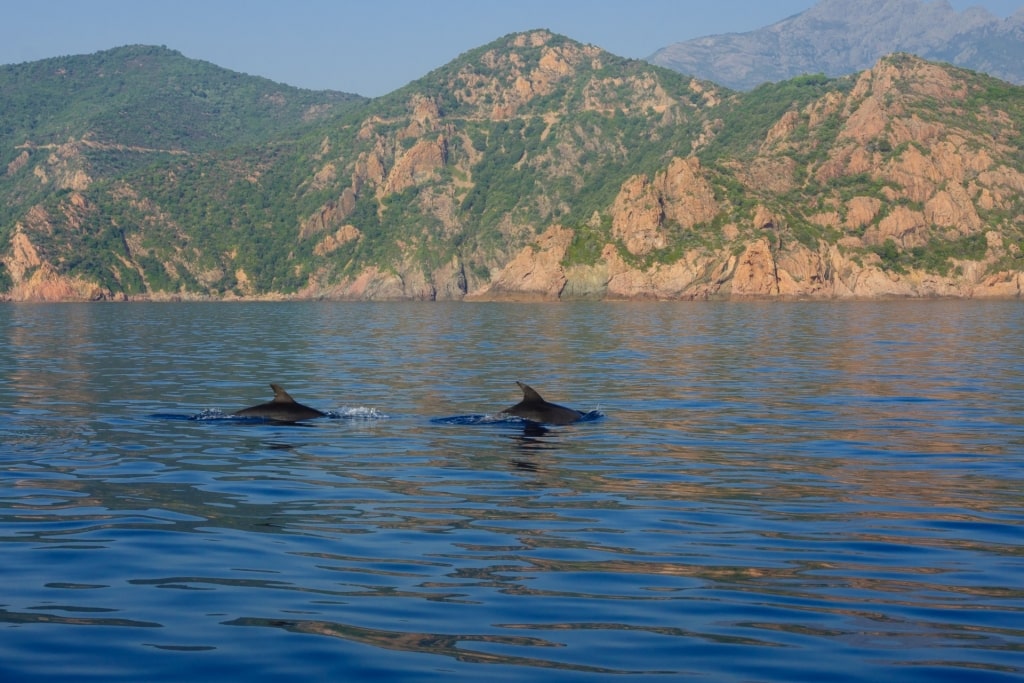
Dolphins
Look out for other wildlife while you’re in and around Ajaccio. Dolphins and occasionally whales may be visible in the bay.
Golden eagles, falcons, and osprey circle on the thermals above the mountains, while several species of seabird nest on the protected Iles Sanguinaires, close to the city. Corsica even has its own breed of dog, the brindle-coated Cursinu, which is used by shepherds.
Tips for Visiting Ajaccio
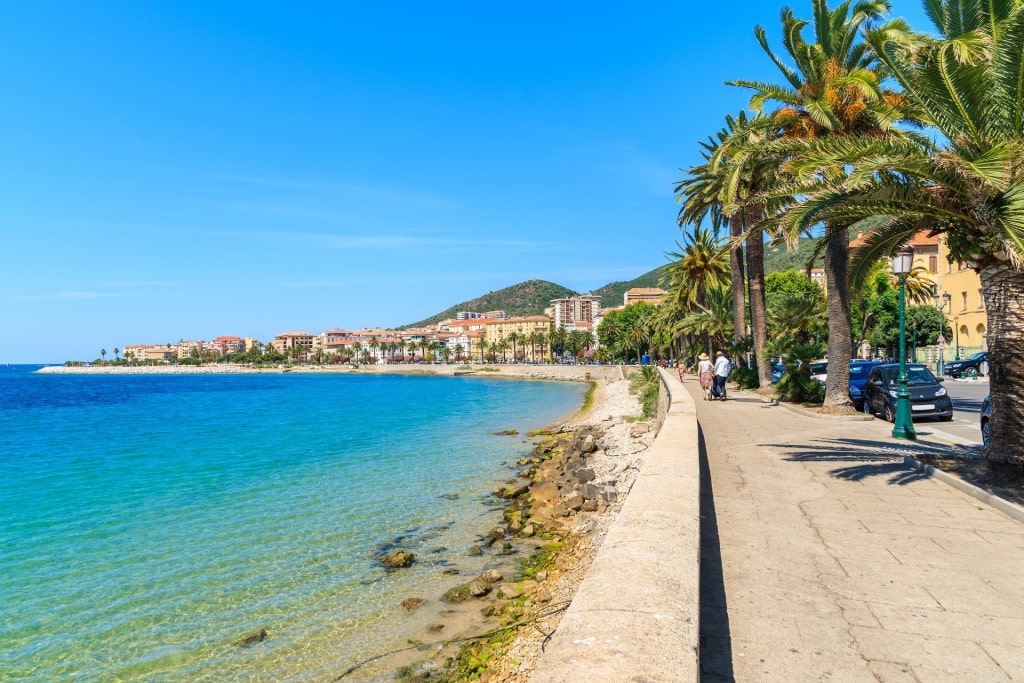
Ajaccio
You don’t have to be a fan of Napoleon to enjoy Ajaccio. However, you will find that his legacy is inextricably entwined with the city’s identity, from his birthplace, now a museum, to street names and statues. It’s worth learning the basics about the Emperor to understand his place in the island’s psyche.
Ajaccio is a walkable city, so wear comfortable shoes and set out on foot. You can stroll through the old center and around the bay to the sandy beaches below the Citadel for a refreshing dip.
The Citadel, incidentally, belongs to the army and is not open to the public, but you can admire its chunky walls and grassed moat from the outside.
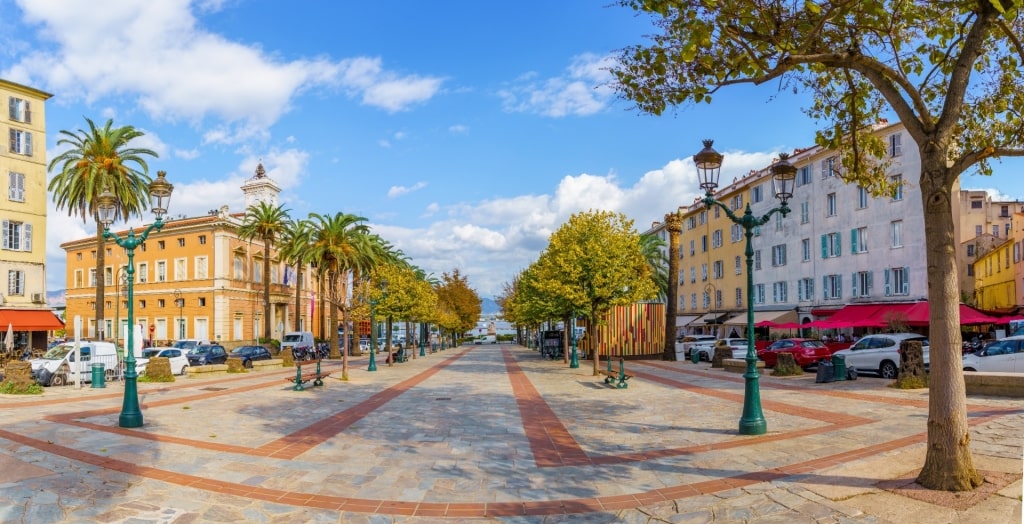
Place Foch
If you decide to take a day trip out of town, try to leave an hour or two free on your return for exploring. This really is an attractive city, with its leafy boulevards and pretty squares surrounded by cafés and restaurants spilling out onto the sidewalk.
Locals speak French and Corsu, the Corsican dialect, and not necessarily a great deal of English. Learning a few words of French is a good idea—and remember that when you enter a shop in France, it’s customary to greet the shopkeeper with “Bonjour”.
Things to Do & Attractions in Ajaccio, France
Swim Off St. Francois Beach
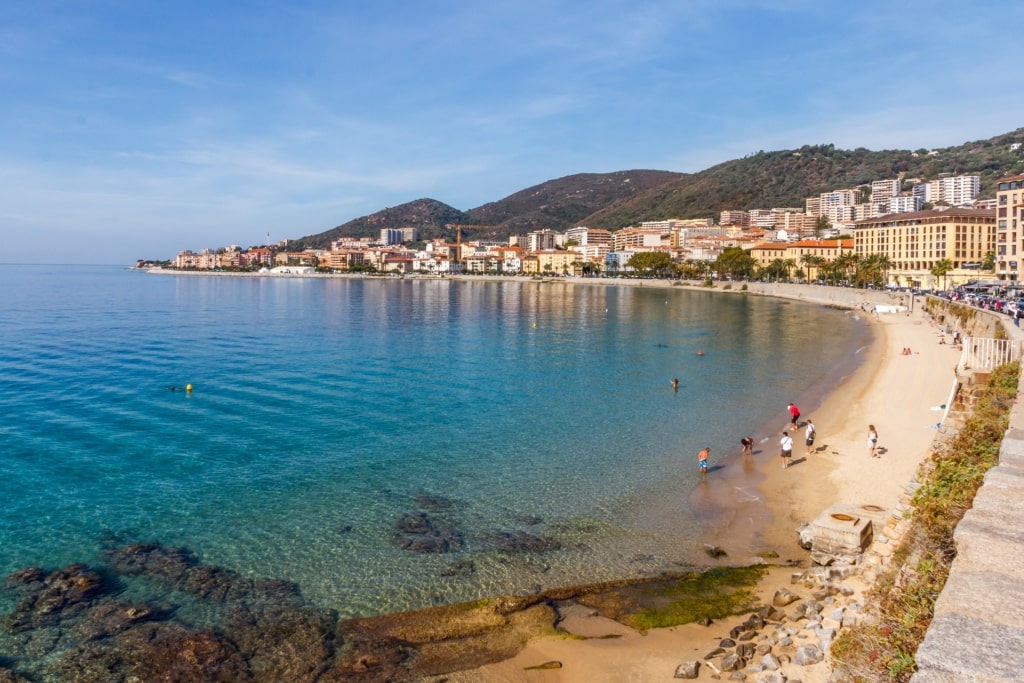
St. Francois Beach
The Plage St. François is Ajaccio’s main city beach, a long, narrow curve of soft sand across the headland from the Citadel. You can easily walk there from the downtown area.
Backed in part by a palm-lined promenade, this is one of Corsica’s best beaches, with its clear water and gently shelving sea bed. St. François is perfect for a dip to cool off after sightseeing.
See the Iles Sanguinaires
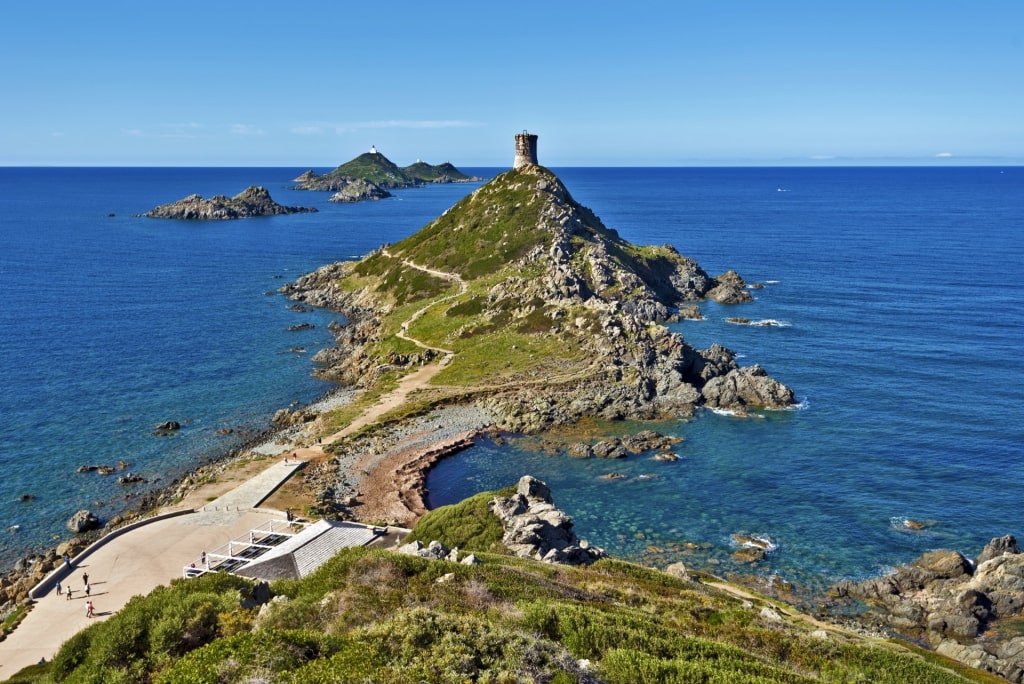
Iles Sanguinaires
Scattered off the point of the Parata peninsula to the north of the city, against a backdrop of steep hills, you’ll see the protected Iles Sanguinaires.
These four hilly islets are composed of blood-red porphyry rock, hence their name (“blood islands”), and are guarded by a lighthouse and the ruin of a Genoese watchtower.
This is a nesting place for seabirds, including the yellow-legged gull, ashen shearwater, and black-headed gull. You can either visit by boat from Ajaccio or follow one of the hiking trails around the peninsula for magnificent views.
Sunbathe on Porticcio Beach
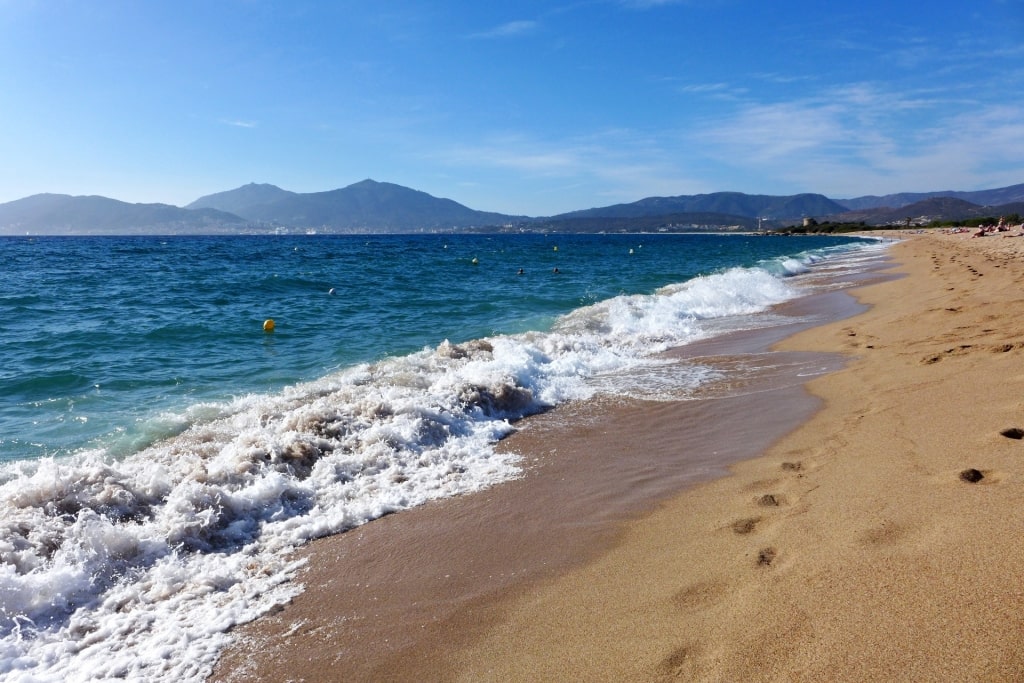
Porticcio Beach
Across the Golfe d’Ajaccio, easily accessible on a 20-minute ferry journey, Porticcio is just south of the city limits and beyond the airport.
Here, the long sweep of soft, golden sand of Plage de la Viva is in a beautiful setting, framed by wooded hills, with views across the bay to high mountains.
Corsica is one of the best beach destinations in Europe, and the water quality here is exceptional. You’ll find everything you need on the beach, from watersports rentals to loungers and umbrellas, as well as some decent restaurants for lunch.
Visit Napoleon’s Birthplace
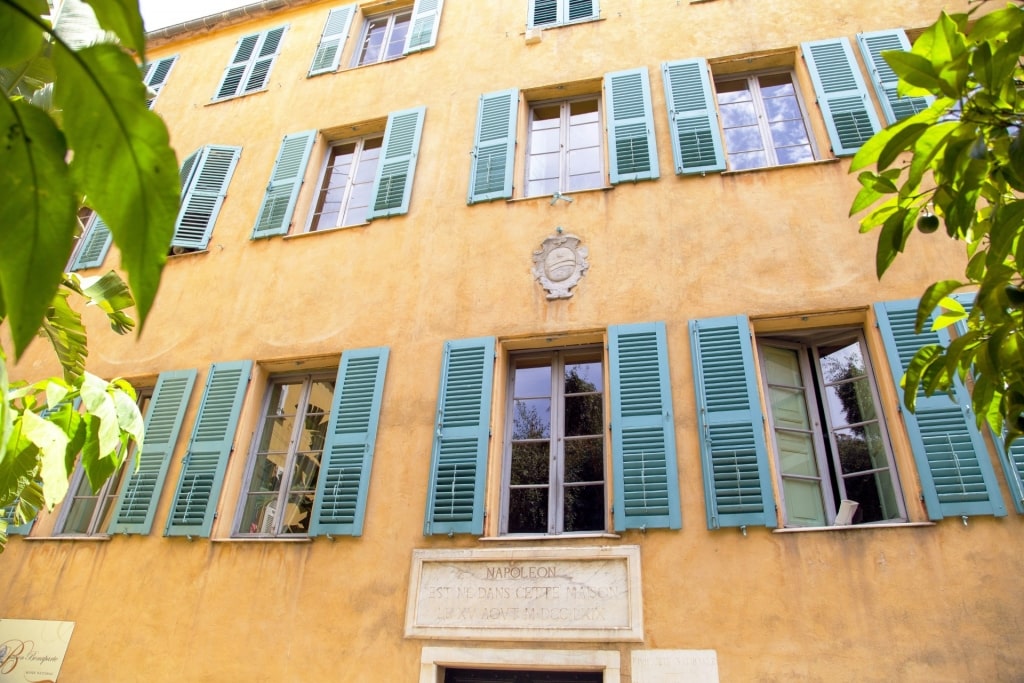
Maison Bonaparte
Napoleon’s birthplace, the Maison Bonaparte, is on the rue St-Charles in the city center. The Bonaparte family were well-to-do landowners and lived here for the first nine years of young Napoleon’s life with their eight children.
While there’s not a great deal of memorabilia left in the house, there’s an interesting recreation of life in Corsica in the 18th century. Various documents tell the story of the family, and you’ll also see some original furniture, portraits, and medals.
See the Prunelli Gorges
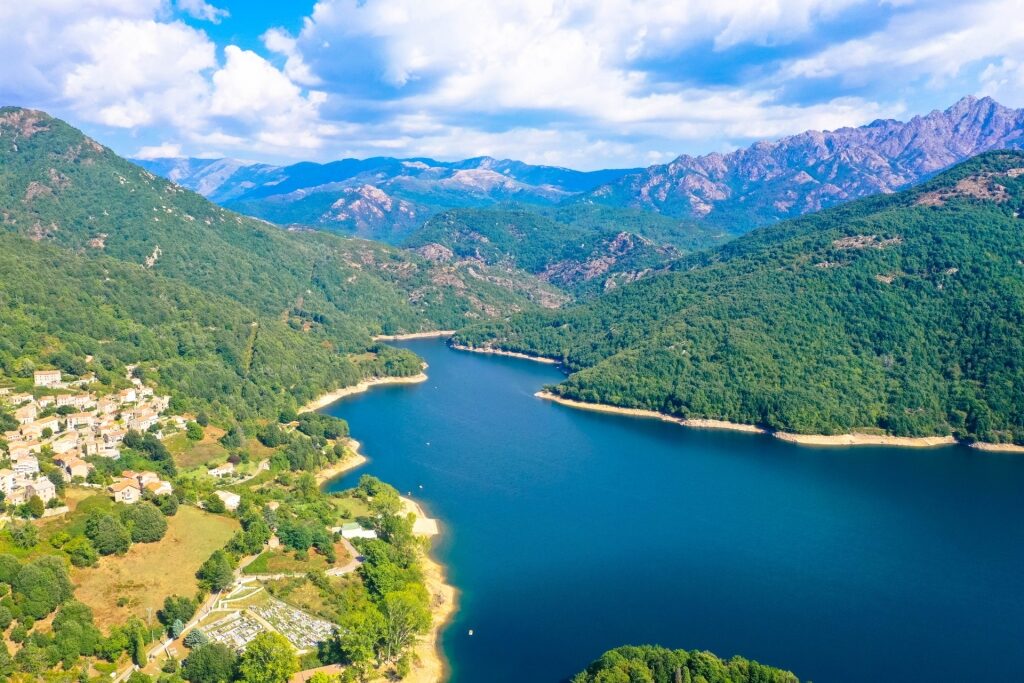
Prunelli Gorges
See a little of Corsica’s rugged interior on a day trip to the glittering expanse of the reservoir Lac de Tolla and, at one end, the dramatic Prunelli Gorges.
The road twists through forests of pine, chestnut and holm oak, with endless views of jagged mountains and red granite cliffs. There are viewpoints from which you can gaze down into the gorges, or if time permits, explore some of the best hiking trails in Europe.
In summer, the lake is a hub for watersports, too, with pedalos and kayaks for rental.
Get a Fine Art Fix at Musée Fesch

Musée Fesch Photo by Pierre Bona on Wikimedia Commons, licensed under CC BY-SA 2.0
This fine art museum, once the home of Napoleon’s uncle, Cardinal Fesch, packs a big punch for a gallery in a relatively small city and is worth an hour or two of your time.
It holds an impressive array of Italian masterpieces—the largest French-owned collection outside the Louvre. You’ll be able to feast your eyes on paintings by Titian, Michelangelo, Botticelli, Fra Bartolomeo, and Vasari.
Hike Into the Hills
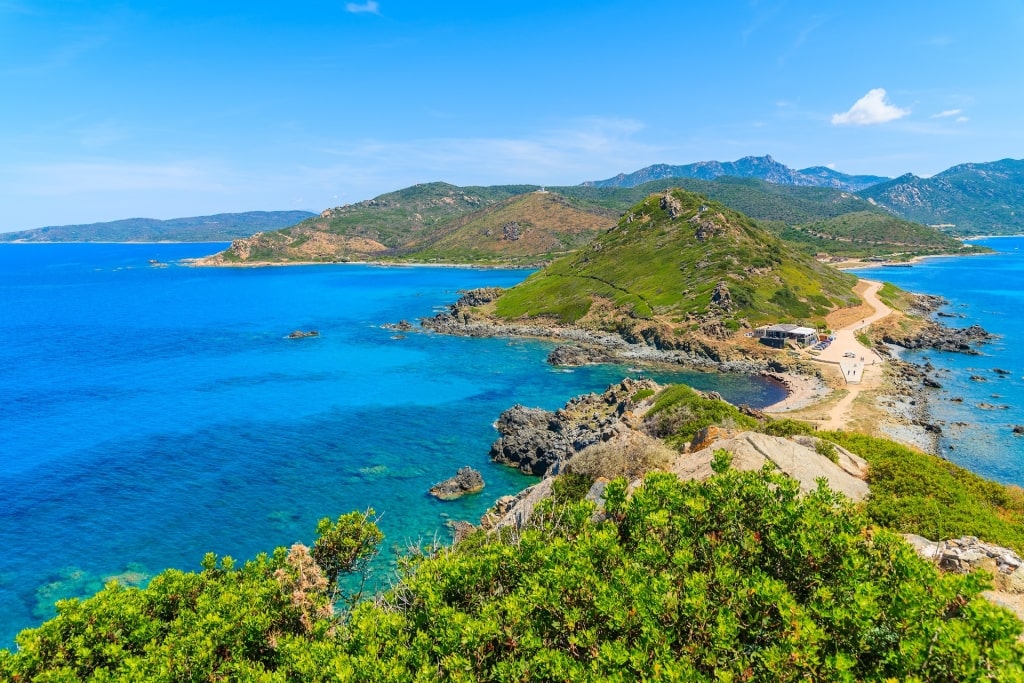
Pointe de la Parata
A beautiful and only moderately challenging trail, the Chemin des Crêtes leads from the Bois des Anglais, near the center of town, along the contours of the maquis-carpeted hills above the built-up area.
You’ll head west, with sweeping views over the city, the sea, the Pointe de la Parata, and the red-hued Iles Sanguinaires beyond.
If it’s not too hot, this three-hour, one-way hike is a wonderful way to get a perspective on Ajaccio and to commune with nature and that famous maquis scent at the same time. Take water and snacks with you.
Browse Ajaccio Market
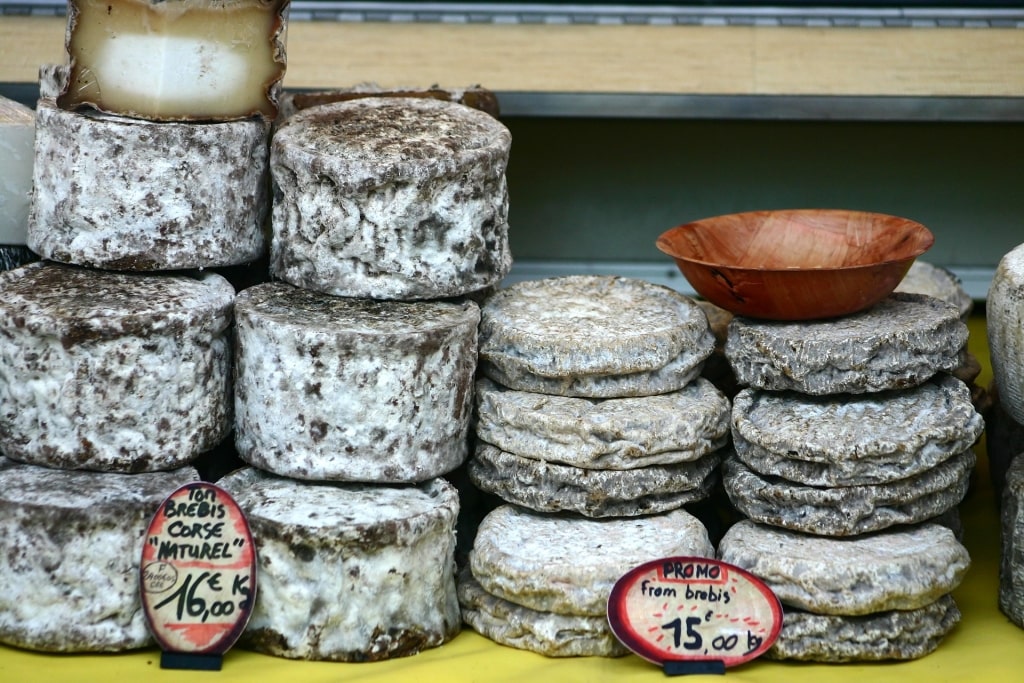
Corsican cheese
The market on Place César-Campinchi is the heartbeat of the city, spreading along Place Foch next to the market square. It’s open from 7 am until 1 pm every day in summer. Visiting here is one of the best things to do in Corsica, especially if you want to sample Corsican cheese, charcuterie, patisserie, and fresh fruit and vegetables.
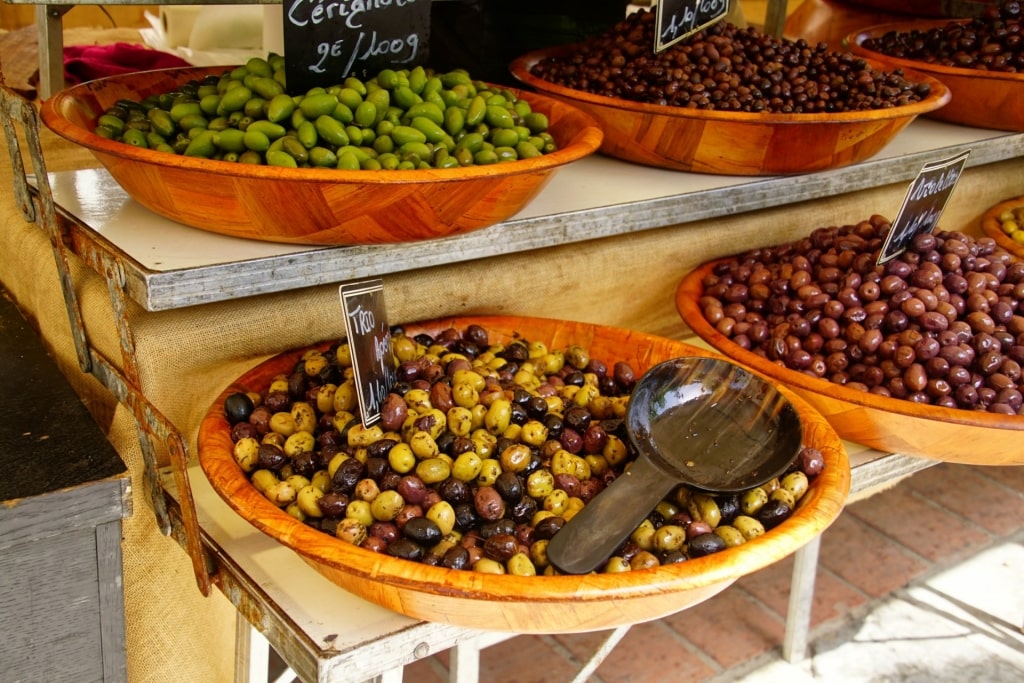
Olives
Look out for tubs of olives, giant peaches, and plump cherries, Shop for gifts including scented soaps, wood carvings, chestnut products, fig jam, flavored oils, and tapenade (an olive, caper, and anchovy spread, typical of the South of France). On weekends, there are other stalls selling souvenirs, clothing, and jewelry.
Food & Drink
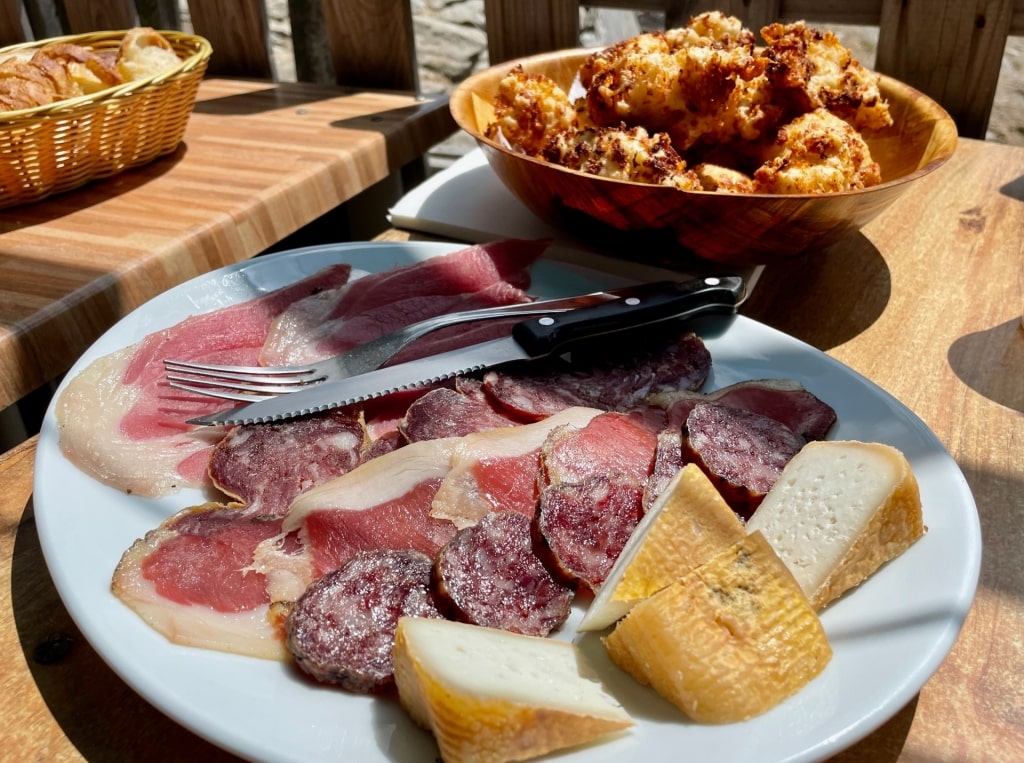
Corsican food
Corsican food reflects the produce of the land, so you’ll find a fair amount of game and lamb on menus, as well as seafood.
Civet de sanglier is a local classic, which is a rich stew of wild boar and vegetables. Island lamb is slow roasted with rosemary and garlic. Red mullet and sea bream are popular local fish.
Cheese and charcuterie feature on most menus; look out for brocciu, the salty ewe’s milk cheese produced on the island. When it comes to charcuterie, prisutto is a good bet, a local smoked ham.
If you see something called fromage de tête (“head cheese”) on a menu or a market stall, note that it’s made from pigs’ brains.

Beignets
More palatable, perhaps, are the local desserts, often cheese or milk-based. Beignets are donuts made from chestnut flour and filled with cheese, while fiadone is a cheesecake with a kick of lemon zest and eau de vie.
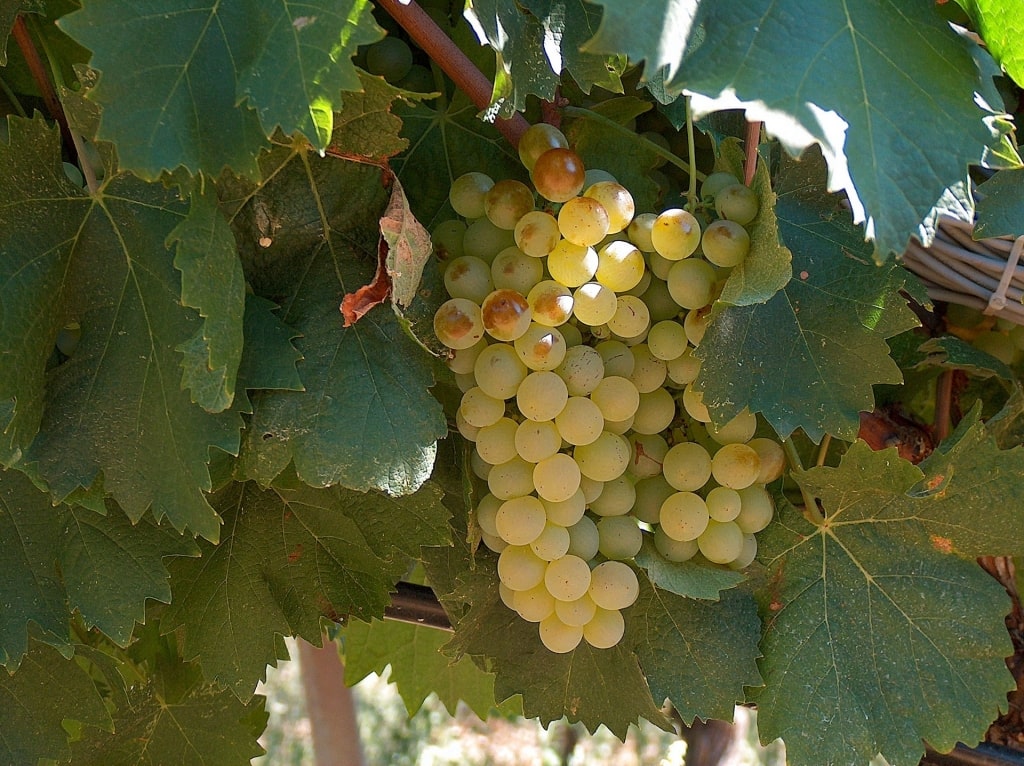
Vermentino
Other island specialties include fig or myrtle jam and liqueurs. Corsica produces excellent wine from its own grape varieties, vermentino and nielluccio, which you should try. It’s rarely exported and goes down exceptionally well with lunch in a sunlit sidewalk brasserie.
Of course, you’ll find traditional French and Italian dishes on the menu, too, from top-quality steak-frites and pizzas. There are restaurants and brasseries all around the narrow streets leading off Place Foch and around the Citadel.
Best Time to Visit Ajaccio
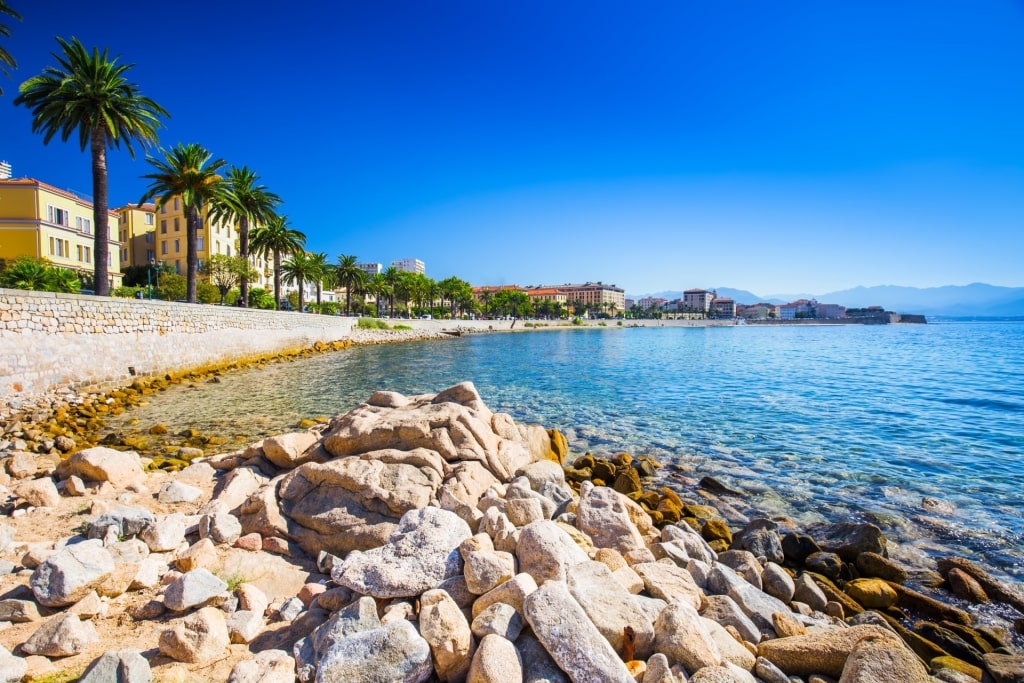
Ajaccio
Corsica has a Mediterranean climate with long, sunny days during summer. Rain is rare, although some days may become quite humid, with the occasional thunderstorm.
If you visit in spring, you may see snow lingering on top of the mountains, an especially beautiful sight against the sparkling Mediterranean.
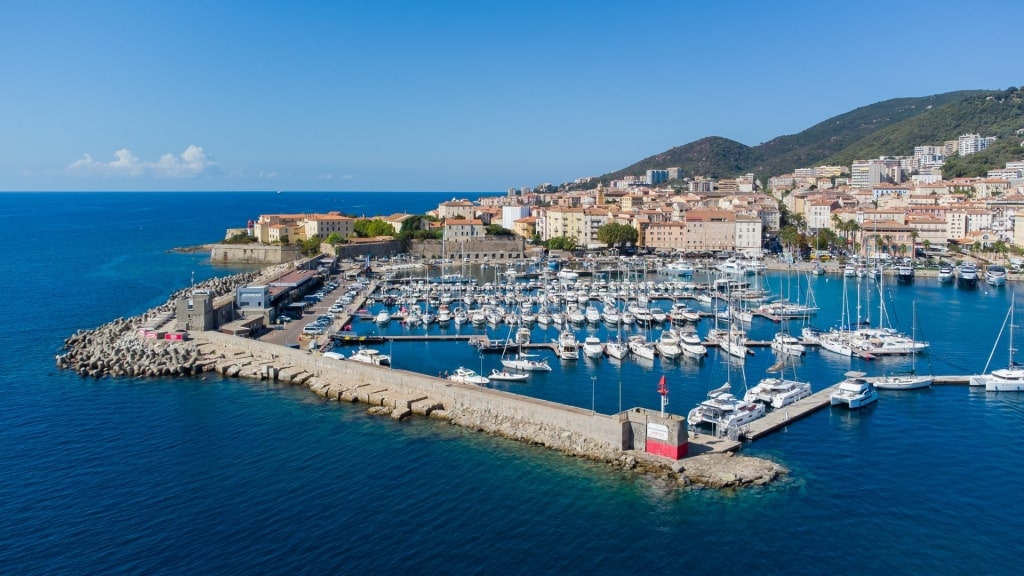
Ajaccio
Inspired to explore the Corsican capital for yourself? A cruise is the best way to visit. Browse our cruises to Ajaccio and plan your Mediterranean adventure.
